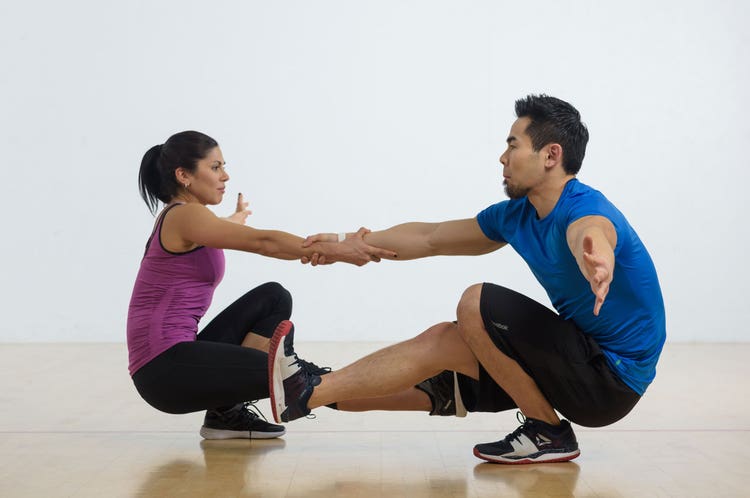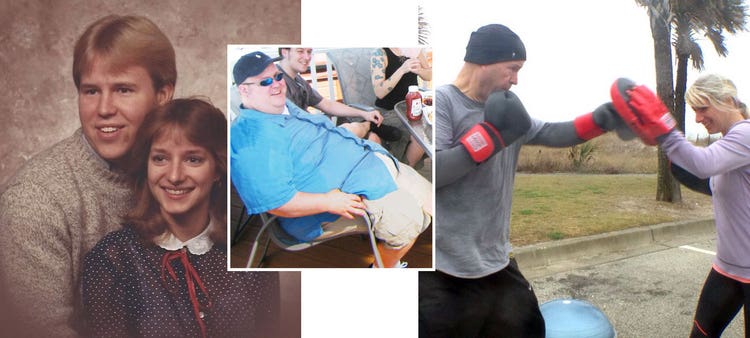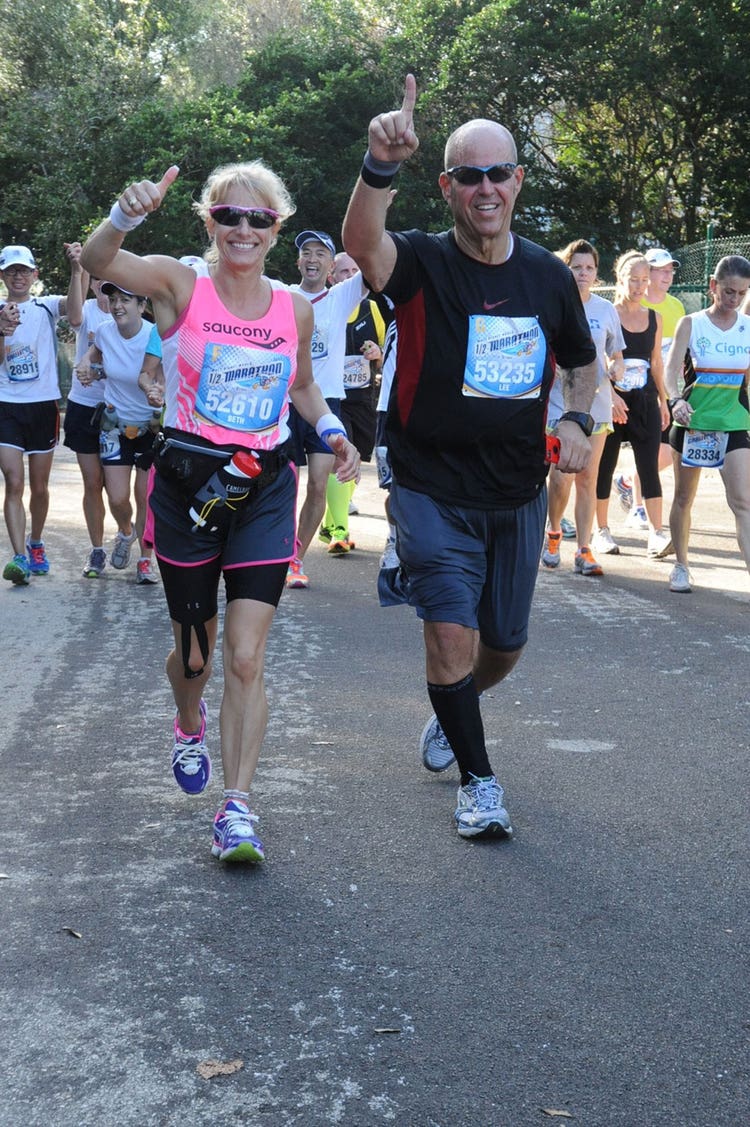Find Your Fitness Partner

The payoffs go way beyond the scale.
When Lee Jordan was at his heaviest at 450 pounds, even 30 seconds of walking in the hallway outside his apartment door seemed daunting as a start to exercising. But after meeting for coffee with his old high school and college sweetheart Beth, a personal trainer certified by the American Council on Exercise (ACE), his motivation to lose weight and get in better shape took on a whole new intensity that resulted in him losing 275 pounds, becoming a personal trainer and health coach, and eventually marrying his former flame in 2012.

“She was the game changer for me personally,” Lee explains. “Instead of having the normal reaction that most people had when they saw me—shock and pity—she just saw Lee Jordan. That gave me the hope and incentive to work in a different direction 30 seconds at a time.”
Having a partner in your corner can be a powerful tool for change, Lee says, even if that person is not a personal trainer or even particularly fit. A friend or spouse can boost your motivation to crank out another push-up, provide the accountability necessary to get you to the gym on a cold morning, and give the encouragement to keep going when progress has slowed. Studies also show this partnership bolsters trust, communication and a sense of closeness, so you’re winning on all fronts.
In Lee’s case, Beth helped him find an ACE-certified trainer who had a wealth of experience dealing with clients with orthopedic issues. Two years later, Lee was able to begin competing in triathlons.
Beth, for her part, knew what was possible with exercise because she had faced her own huge hurdle years earlier when she herniated a disk in her lower back, was in a back brace, and decided to use exercises rather than surgery to heal her back. It took two years for her to fully regain her mobility.

Now, the couple runs road races together, boxes in a home gym, and takes yoga classes at a local studio. Fitness is not only their jobs as trainers and health coaches, it’s the way they spend time together, have fun and connect.
“It can be exciting to work out with a husband or wife,” Beth says. “You are having fun and pulling energy off each other when you work out.”
Recruiting your partner
To get more partners in on the fitness action, Beth often has “bring a friend” days in her classes, to which people bring a boyfriend, girlfriend or spouse.
“What they gain from it is a lot of respect … for how hard [their partners] are working,” she remarks. “They will say, ‘I can’t believe you get up every day and do this.’”
If you have a partner that is reluctant to join you for workouts, Lee says, it’s better to use a subtle approach to get him or her interested, rather than pushing too hard.
“You can lead them to water, but you can’t make them drink. The only thing you can do is make them thirsty,” he says, with a laugh.
Lead by example, he suggests. Keep working out and keep talking about it in a way that sounds fun, and your significant other might think that giving it a try was his or her own idea.
If that doesn’t work, find a friend or colleague to hit the gym or park with you. And if you can’t find someone to sync up with, you can get some of the same payoffs by selecting a mentor in a group fitness class—someone who shows up every week, inspires you to crank out a couple more reps, and can provide a model for modifications or demonstrate correct form.
“There are always two or three people in the group who are willing to and want to help in any way they can,” Beth says.
Likewise, if you’re going solo on the treadmill and in the weight room and find yourself next to the same person every day and chatting between sets, you might propose taking your workouts to the next level by signing up for small-group personal training, which will cost both of you less money than hiring a personal trainer on your own.
Finding a compatible workout partner
The best partners, Lee says, have a few things in common:
- Similar expectations. You want someone who’s on the same page with you in terms of goals and approach. If your partner wants to sprint through a 90-day challenge and you want to slowly build your fitness level, frustration will surely follow.
- Strong commitment. Find someone who’s as committed to showing up as you are, or your partner might become your excuse for skipping workouts. You want someone who feels a strong responsibility to show up, so they don’t let you down and derail your goals.
- Compatible schedule. Who has the same pockets of free time that you do? If you need your partner to watch the kids when you work out, clearly a friend or co-worker might be a better bet.
Lastly, avoid working out with someone who might undermine your goals by not dishing out enough praise or high fives or someone who pushes you so hard you are getting injured or demoralized. Lee’s remarkable transformation took years, not months. So did Beth’s.
“Our mentality is go small or go home,” Lee says. Quick-fix programs are hard to sustain for the long term, he explains, and mostly do people more harm than good.
“Extraordinary results don’t require extraordinary effort,” he states, “just ordinary effort done every day.”
Photo credits: Mark Kuroda, kurodastudios.com; Lee Jordan
Hair and make-up: Gabriel Perez, Instagram.com/FacesByGabriel